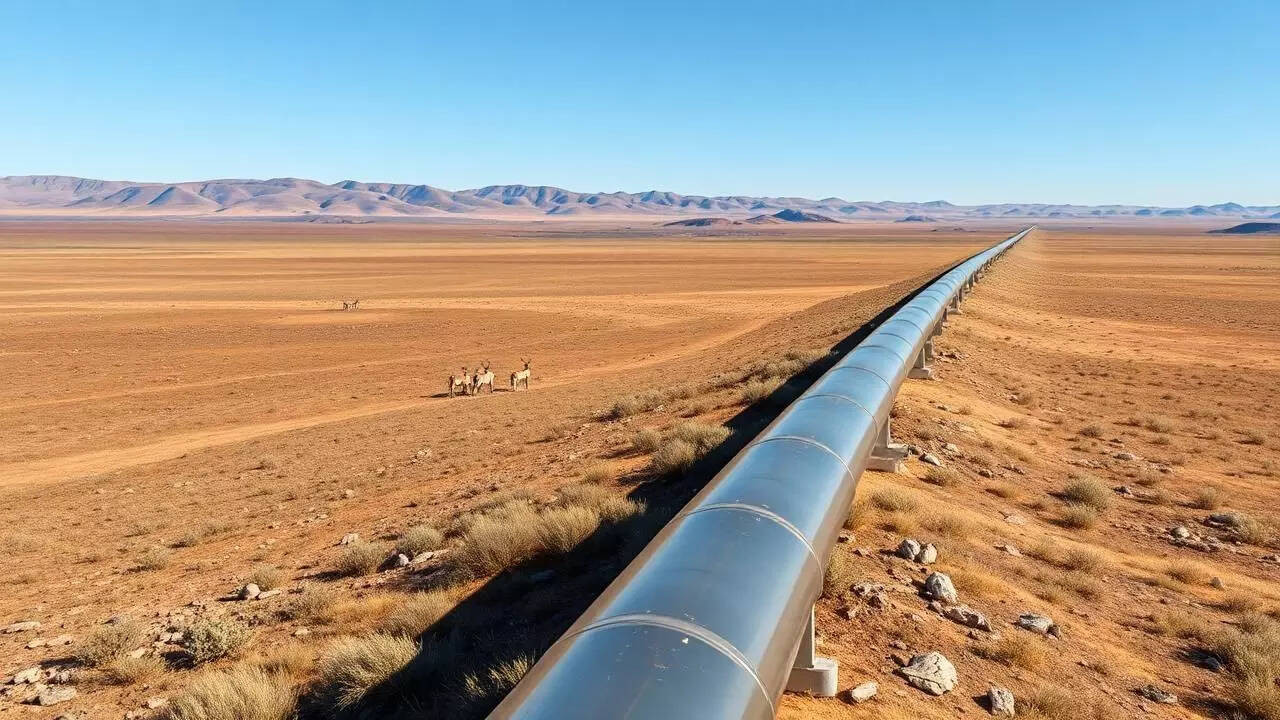Powering Up: Russia and China’s Ambitious Gas Pipeline Project
The world is watching as Russia and China forge ahead with plans for a new gas pipeline, a colossal undertaking signaling a deepening of ties between the two nations and a potentially significant shift in the global energy landscape. This isn’t just about pipes and gas; it’s a statement.
The project, often referred to as the Power of Siberia 2, envisions a 2,600-kilometer (approximately 1,616 miles) pipeline transporting natural gas from Russia’s Yamal Peninsula, a region rich in resources, through Mongolia and into China’s burgeoning markets. If brought to fruition, the pipeline could supply China with up to 50 billion cubic meters of natural gas annually. That’s a serious amount of energy!
Why Another Pipeline? The Energy Security Question
So, why this colossal venture? The answer lies in the intertwined goals of energy security and economic partnership. For Russia, the pipeline offers a crucial alternative export route for its natural gas, particularly vital following disruptions to its European markets. Diverting supplies eastward makes strategic sense.
For China, the new gas pipeline bolsters its energy security, diversifying its import sources and fueling its relentless economic growth. Natural gas is considered a cleaner alternative to coal, a mainstay of China’s energy production, as the nation strives to meet environmental targets and reduce air pollution in its sprawling urban centers. The pipeline provides a stable, long-term supply of a crucial resource.

Geopolitical Implications: More Than Just Energy
The implications of this project stretch far beyond mere energy trade. This collaboration between Russia and China is viewed by many as a move to reshape global power dynamics. It’s a clear demonstration of their deepening strategic partnership, a counterweight to Western influence in certain spheres.
This alignment isn’t just about gas. It’s about shared strategic interests, a desire for a multipolar world, and a willingness to challenge the existing global order. This pipeline is a physical manifestation of that ambition. And, like any significant infrastructure project, it’s accompanied by both opportunity and potential challenges. The route traverses complex terrains, requiring meticulous engineering and construction expertise. Financing such a large-scale project requires careful planning and significant investment. Moreover, international relations and fluctuating gas prices all come into play.
Power of Siberia 2: An Evolving Story
While the broad strokes of the project are clear, the finer details are still being ironed out. Negotiations concerning pricing, transit fees through Mongolia, and financing structures continue. The timeline for completion remains somewhat fluid, but the momentum appears strong.
The existing Power of Siberia pipeline, already delivering gas from Russia to China’s northeast, serves as a testament to the feasibility of such large-scale energy infrastructure projects. However, Power of Siberia 2 is significantly larger and more complex, posing unique engineering and logistical challenges. This new gas pipeline will impact multiple countries.
Impacts on the Global Stage
The completion of this pipeline will inevitably reshape the energy market. Increased gas imports from Russia could affect global prices and influence the competitiveness of other suppliers. It could also potentially alter the balance of power within the gas market, giving Russia and China greater influence. This project will likely reverberate across the energy sector for years to come, impacting everything from pricing strategies to international relations. This undertaking underscores how intertwined energy, economics, and geopolitics have become. It provides a fascinating case study in how nations adapt to evolving global dynamics and pursue their strategic interests.
This also could be seen as an example of the shifting reliance on fossil fuels. As the world transitions towards cleaner energy sources, the long-term viability of such large-scale fossil fuel projects is also a question to be asked. See also our analysis of [Renewable Energy Trends in Asia](renewable-energy-asia).
Ultimately, the Russia-China gas pipeline project represents a significant development with far-reaching consequences. Whether this partnership will successfully address energy needs and reshape global power dynamics is yet to be fully determined, but the potential impact is undeniable. The world will undoubtedly be watching as the Power of Siberia 2 takes shape, transforming energy flows and geopolitical relationships along the way.







